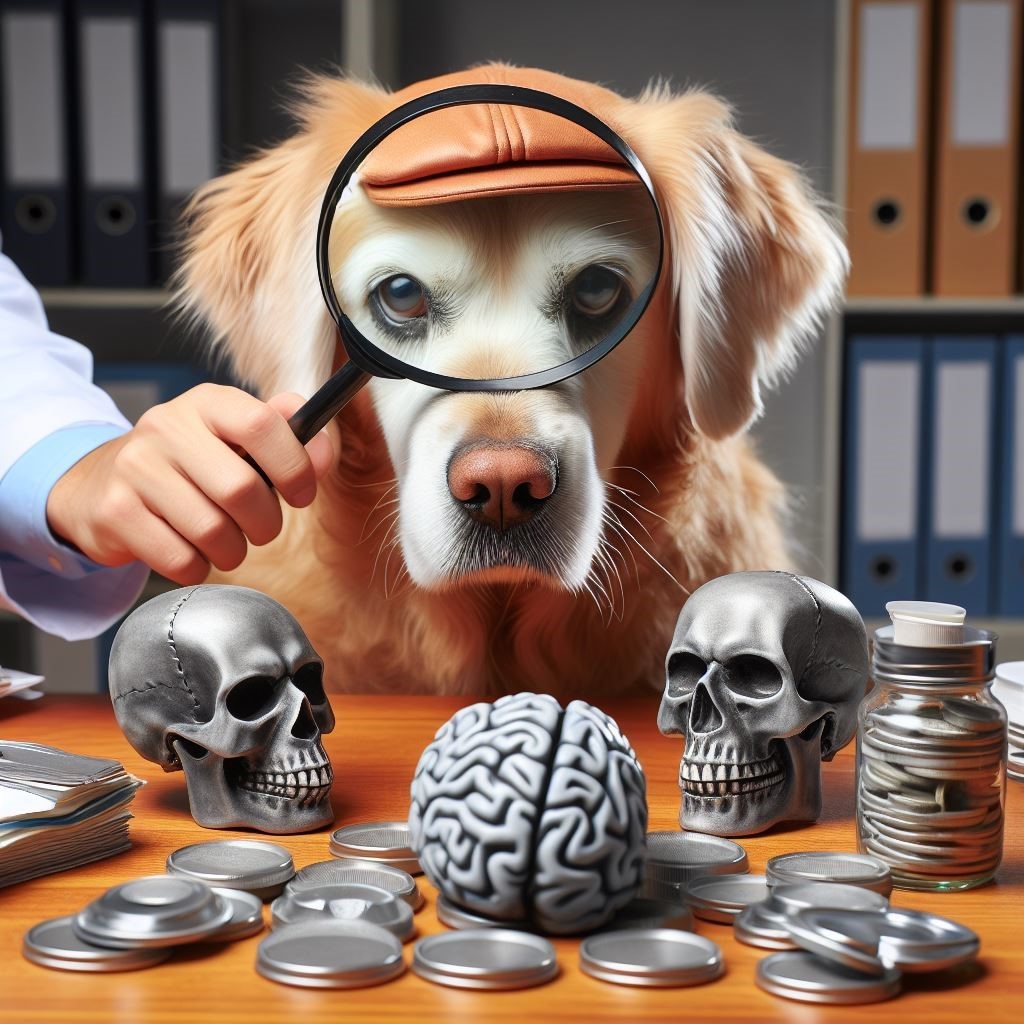Dog Dementia Detectives: Solving the Mystery of Canine Memory Loss
Just like humans, dogs can develop dementia as they age. Canine cognitive dysfunction, also known as dog dementia or dog Alzheimer’s disease, affects a dog’s memory, learning, perception, and awareness. As a dog owner, being able to recognize the signs of dementia in your aging pet is key to providing the best care. This article explores the symptoms, causes, diagnosis, treatment, and management of dog dementia to help owners support their pets through this difficult condition.
What is Dog Dementia?

Dog dementia, clinically known as canine cognitive dysfunction (CCD), is a neurodegenerative disorder that causes progressive decline in a dog’s cognitive function. It is similar to Alzheimer’s disease in humans. As dogs age, plaque buildup, inflammation, and neurotransmitter changes in the brain lead to impaired memory, learning, spatial awareness, housetraining, and more.
CCD usually affects dogs over the age of 7, and risk increases with advanced age. Large-breed dogs may develop dementia at a younger age. By age 15, over 80% of dogs exhibit at least some signs of canine cognitive dysfunction.
Recognizing Symptoms of Dog Dementia
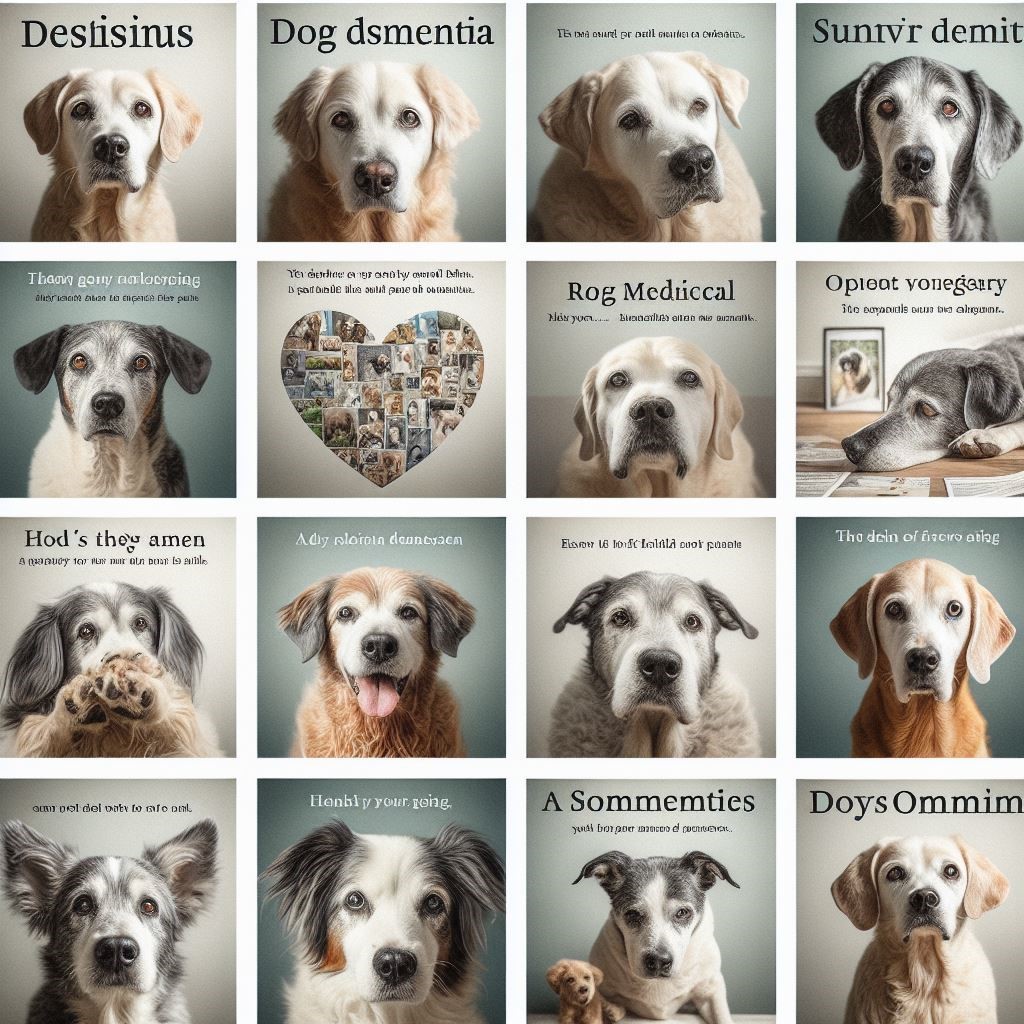
Dog dementia typically develops slowly over months to years. Here are some common signs of CCD:
- Disorientation, getting lost in familiar places
- Altered interactions with family members
- Disturbed sleep-wake cycles, restless at night
- Loss of prior housetraining
- Forgetting learned behaviors like commands
- Increased anxiety, agitation, or irritability
- Compulsive pacing or licking behaviors
- Failure to recognize familiar people/pets
Other symptoms like reduced interest in play, increased barking or whimpering, and aimless wandering may also indicate CCD. The gradual onset of these behavioral changes in an older dog warrants a veterinary evaluation for cognitive dysfunction.
What Causes Dog Dementia?
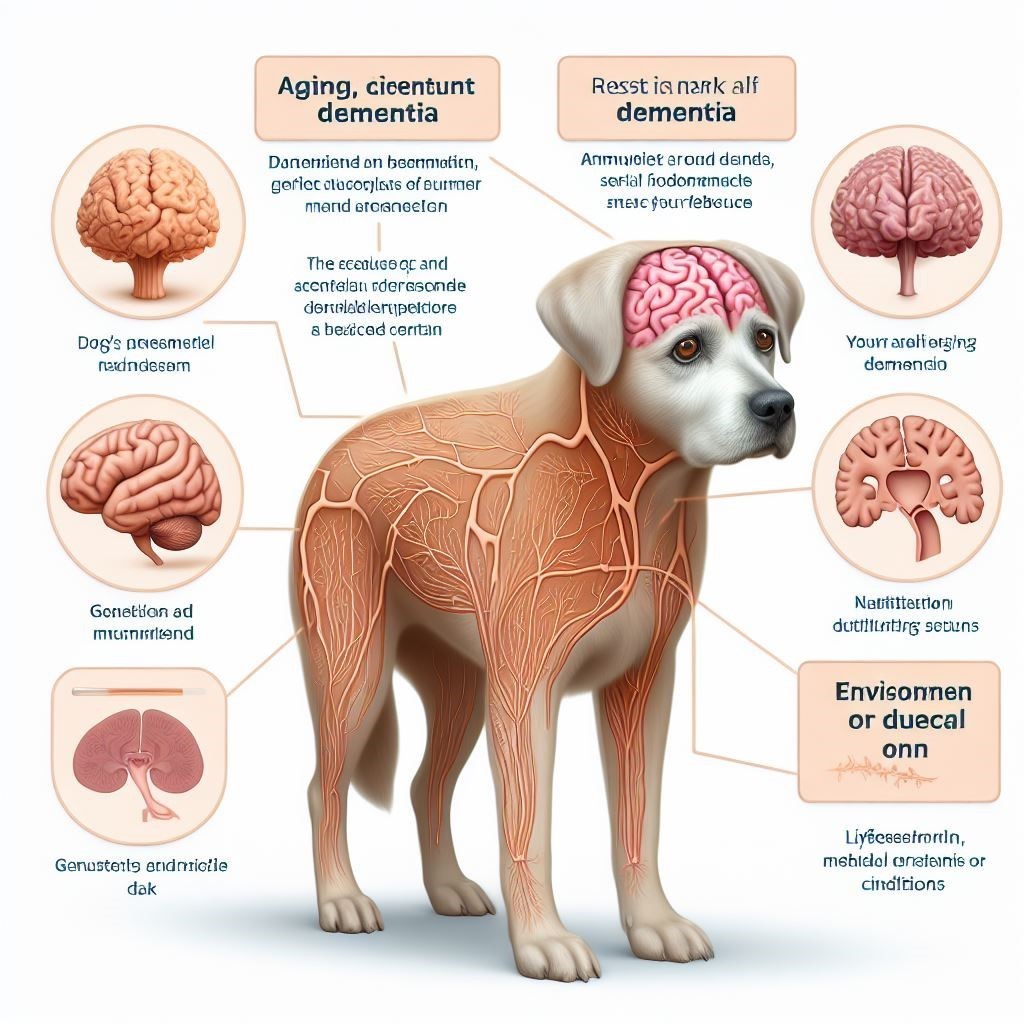
The exact causes of canine cognitive dysfunction are not fully understood but likely involve multiple factors, including:
- Amyloid plaques – Accumulations of beta-amyloid protein in the brain, similar to Alzheimer’s pathology in humans. These interfere with cell communication.
- Oxidative damage – Accumulation of damaging free radicals leads to inflammation and neuron death.
- Vascular changes – Hardening of arteries and small strokes reduce blood supply to the brain.
- Neurotransmitter deficits – Decline in acetylcholine, dopamine, serotonin, and other chemicals involved in nerve signaling.
- Protein folding defects – Misfolded proteins accumulate and form toxins in brain cells.
Genetics, environmental factors, diet, and general health also influence a dog’s risk of developing dementia. The causes are quite complex and multifactorial.
Diagnosing Dog Dementia: Tests and Assessments

Since dogs cannot describe their symptoms, diagnosing CCD relies on clinical observation, physical exam, diagnostic testing, and ruling out other conditions. Important steps include:
- Medical history – The veterinarian reviews any changes in behavior or function noted by the owner. Learning when symptoms started and how they progressed over time helps determine if dementia may be the cause.
- Physical exam – The vet performs a full exam looking for pain, organ dysfunction, infection, arthritis, dental disease, vision/hearing loss, and other issues that could explain behavioral changes.
- Lab tests – Bloodwork, urinalysis, and other tests help detect medical conditions like kidney disease, thyroid disorder, liver problems, or infection.
- Brain imaging – An MRI or CT scan can reveal brain atrophy and rule out stroke, tumor, or other structural abnormalities.
- Behavioral tests – Simple tests of the dog’s memory, navigation, response to commands/stimuli, and problem-solving abilities may identify impairment.
- Treatment trial – Response to medication targeting cognitive decline can help confirm the diagnosis.
Effective Treatments for Dog Dementia
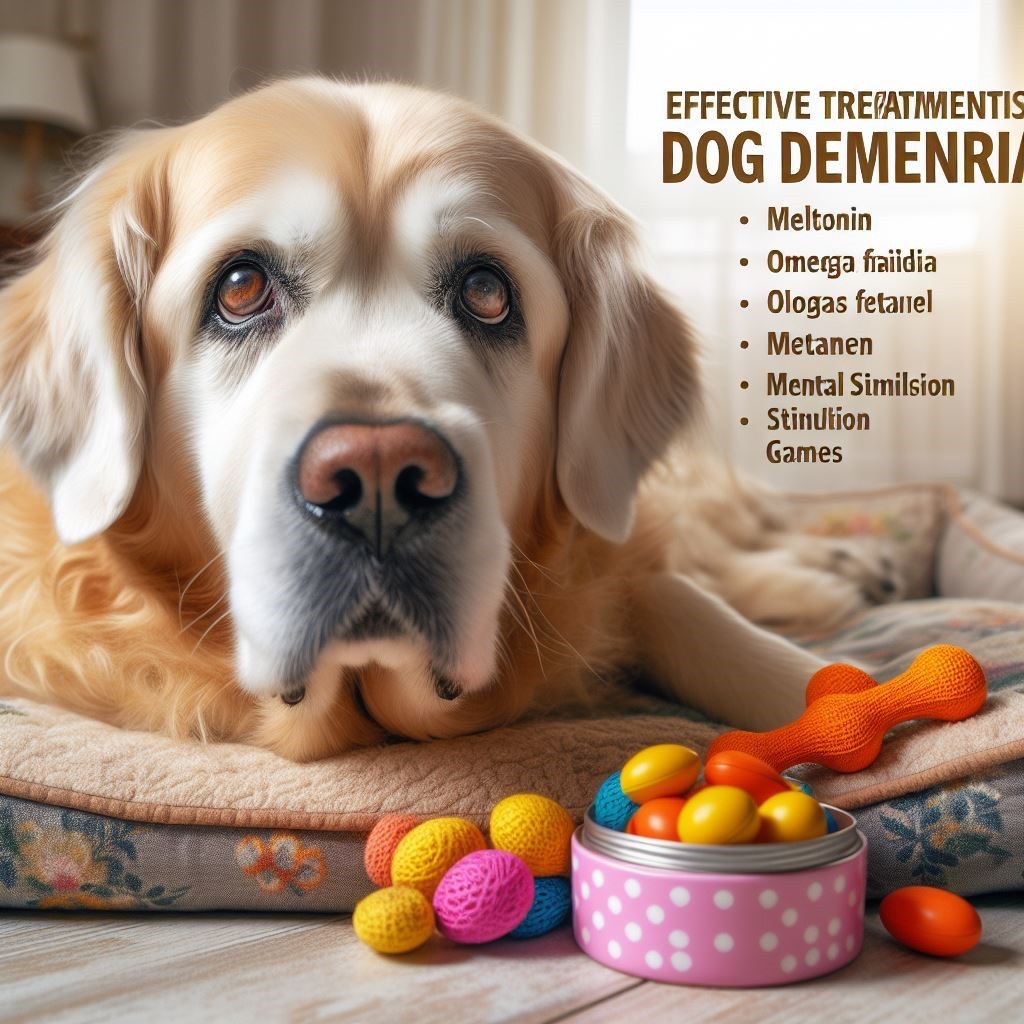
While no cure exists for dog dementia, certain therapies can help slow progression and temporarily improve cognitive function. Treatment options include:
- Selegiline – This MAO-B inhibitor drug may help boost neurotransmitter levels in the brain. It is FDA-approved to treat CCD in dogs.
- Antioxidants – Supplements containing vitamins E, C, and A combat damaging oxidative stress on neurons.
- Fish oil – Omega-3 fatty acids support neuron health and reduce inflammation.
- Diet – Prescription senior dog foods provide antioxidants, mitochondrial protectants, and other benefits.
- Cognitive training – Regular training exercises stimulate mental activity to strengthen cognitive skills.
- Puzzle toys/games – Interactive play that makes dogs think and problem-solve may improve cognition.
- Phosphatidylserine – This nutritional supplement supports cell membranes and nerve cell health.
- S-adenosylmethionine (SAMe) – Shown to increase neurotransmitters and has antidepressant effects.
Caring for a Dog with Dementia

In addition to medical treatment, making some changes at home can help support a pet with CCD:
- Maintain a predictable daily routine for feeding, walks, playtime, etc.
- Use baby gates, closed doors, or tethers to restrict access and prevent getting lost or wandering.
- Post reminders like “No!” or “Outside?” with images at doors.
- Ensure the dog always wears ID tags. Consider a GPS pet tracker.
- Place water bowls, beds, and pads in easily accessible areas.
- Increase lighting and night lights to prevent disorientation in the dark.
- Consider indoor potty systems like pee pads if housetraining declines.
- Use calming aids like pheromone diffusers or gentle music to ease anxiety.
- Increase interactive play, cuddling, grooming, and quality time together.
The prognosis for Dogs with Dementia
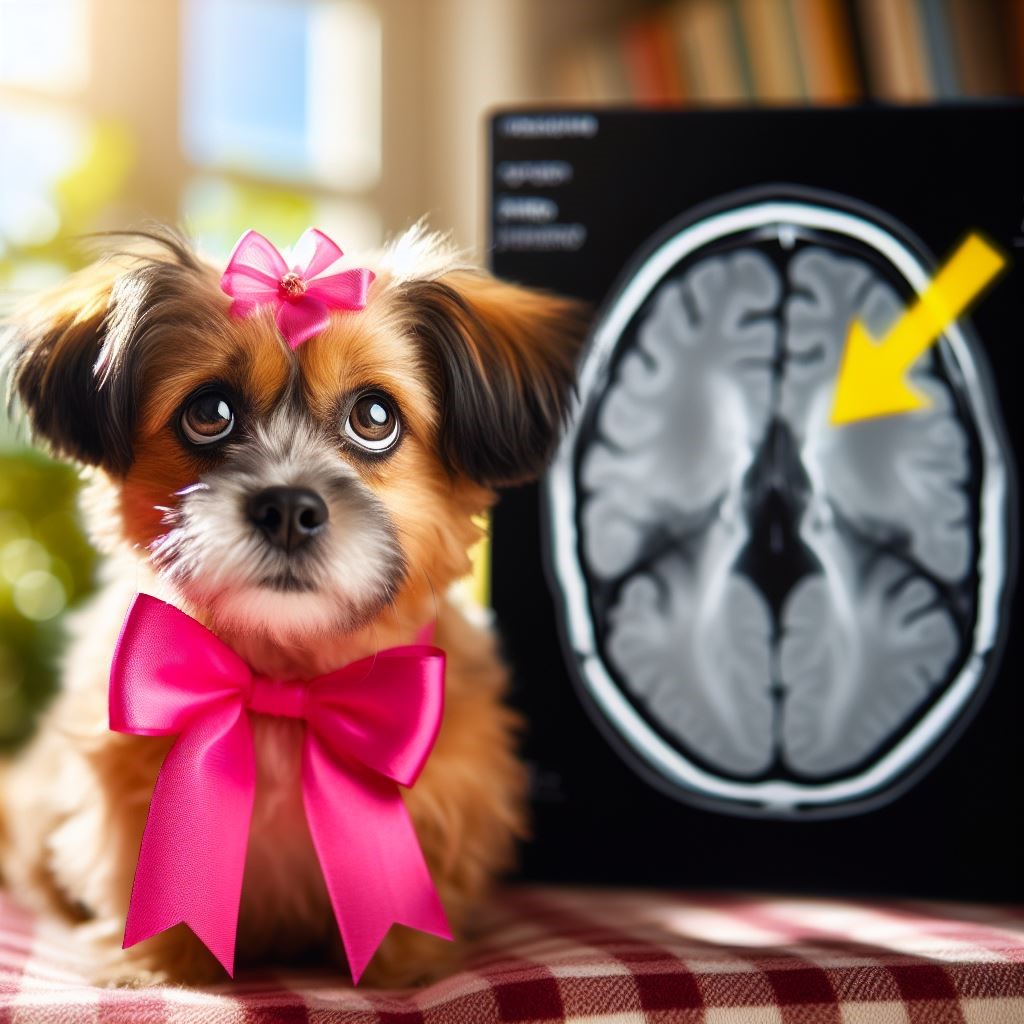
While dog dementia cannot be reversed or cured, early diagnosis and diligent supportive care can extend quality of life for months to years before the condition becomes disabling. With treatment, some dogs maintain a good functional level of cognition throughout life. However, CCD is progressive, so dogs will eventually decline despite therapy. Euthanasia may be considered when a dog’s quality of life is no longer acceptable.
The Takeaway on Dog Dementia
Canine cognitive dysfunction is similar to Alzheimer’s disease, causing progressive deterioration in memory, learning, behavior, and awareness. Recognizing the signs of dementia allows early veterinary diagnosis and treatment to maximize quality of life. While supportive care cannot cure CCD, strategies like cognitive training, medications, supplements, and environmental adaptation can significantly help dogs compensate. With a loving pet owner’s help, dogs can still live happily despite having dementia.
FAQs about Dog Dementia
What are the signs of dementia in dogs?
Some common signs of dementia or cognitive dysfunction in older dogs include increased confusion or anxiety, forgetting trained behaviors like commands or housetraining, wandering aimlessly, disturbed sleep cycles, and not recognizing familiar people or places. It comes on slowly, so you may notice subtle personality changes. Your vet can help confirm whether your pup’s behavior changes are due to dementia.
How long can a dog live with dementia?
Every dog is different, but with medication, mental stimulation, and a stable routine, many dogs live happily with dementia for 1-3 years before it starts seriously impacting their quality of life. Providing a safe environment and adapting care as their abilities change can help dogs cope. But dementia is progressive, so dogs do eventually decline.
What can you do for a dog with dementia?
Making some simple changes at home can really help a dog with dementia. Keep their routine consistent, use baby gates or leashes to prevent wandering, place water bowls and beds in easy-to-access spots, put up reminder signs at doors, increase night lights and lighting, and provide more interactive playtime together. Medications and supplements may also ease symptoms.
Is there any treatment for dementia in dogs?
While there’s no cure, certain medications like Selegiline, supplements like fish oil and antioxidants, prescription senior dog foods, and cognitive/behavioral training exercises may improve brain function and temporarily reduce symptoms. Early intervention provides the best outlook. Though supportive care can’t reverse it, treatment can extend a good quality of life for dogs with dementia.
Conclusion
A dog’s brain ages just like a human brain, and dementia presents similar challenges for pets and people. As researchers further study CCD, treatments will continue improving, extending disabled years for dogs. But supportive care from pet owners is the most important factor in maintaining quality life for pets with dementia. Early intervention, patience, and adapting their world to accommodate cognitive impairment allows some geriatric dogs to live well with canine cognitive dysfunction. Their unconditional love deserves the same gentle care in return.

